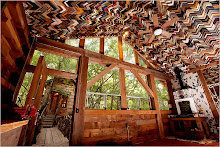"DID MONSANTO BACK
A DELIVERY TRUCK OVER
THE WHOLE FOODS KID?"
--Greensburgher on Twitter
It was a fierce twelve year struggle between the organic elite and genetic engineers with no clear winner in sight. But in the wake of the battle, it was obvious who had the bloodier ax. Monsanto emerged the victor with the help of the U.S. Calvary--Uncle Sam. At stake were over 25,000 organic farms and ranches, the very people we have been depending on to keep our food supply uncontaminated.
In the beginning, there was a conclave of greenies headed by Whole Foods, Stoneyfield Farm and Organic Valley who took up "the cause;" indeed the fight to keep the massive planting of a chemical and energy-intensive genetically engineered perennial crop away from John Q. Public. The crop was GE (genetically engineered) alfalfa--Round Up Ready Alfalfa-- which some, like World Truth TV, say was guaranteed to spread its mutant seeds across the nation; eventually contaminate organic animals; most likely poison farm workers, cause the use of toxic herbicides which in turn will in time will produce a super weeds, which will require even more potent herbicides to kill it. At first blush, Whole Foods staunchly defended what they called "seed purity." but in the end it seemed they were overwhelmed by Monsanto, "the bio tech bully of St. Louis [and the government's] bio tech cheerleader, Tom Vilsack," said World Truth.
Whole Foods, however, sees it differently.
"THESE ARE TROUBLING TIMES IN THE KINGDOM"--Flo, Progressive Insurance
"USDA Secretary Tom Vilsack recently invited representatives from agriculture, business and consumer organizations to explore coexistence between non-GE proponents and GE proponents. It showed refreshing leadership after many years of debate that has cost farmers with contaminated crops in this country millions of dollars in litigation over the years," defended Whole Food in their blog, The Whole Story.
Several months down the pike, they were on the defensive again pleading with the public to "get back to your scheduled shopping," comforted by these assurances:
"We have not been bought out by Monsanto... we (no way!) made a secret deal with Monsanto...Wrong again! GMO's [genetically modified organisms] have been in our food supply for as long as there have been GMOs." And even allowing that coexistence between GMO and NonGMO "is a must!"
Two years ago, The NonGMO Project agreed stating: "...if the fields are contaminated...biotechnology companies for the first time would be held accountable and...forced to pay for the damages."
Sigh. It would have been nice if the convincing had gone the other direction. This should have been a simple case of David vs. Goliath. In case you don't know your King James--David wins. In the bible, the mighty giant is slain by the tween with the power of the Almighty. Cool. But in this case we sense some unfair play, Monsanto may have just backed a delivery truck over the Whole Foods kid, who was probably on a bike. And they got away with it. Not cool. In the words of Flo from Progressive, these are "troubling times in the kingdom."















 Blonds have been maligned for years, the subject of ill humor and the butt of bad jokes. So what's this latest brouhaha? The plastic used to make her world famous form may not be eco-friendly. "Plastics" as many will recall from the movie "The Graduate" was the word issued by Mr. Robinson to actor Dustin Hoffman as the one material "that will save us all." Fast forward several decades and we've learned that plastic is causing our environment to pay a heavy toll by bein precisely what we expect it to be--indestructible. Sure, we are doing our best to purge ourselves of the need for plastics, but are we willing to supplant the fantasies of young girls from the ages of "3 on up" not to mention the countless collectors, many of them
Blonds have been maligned for years, the subject of ill humor and the butt of bad jokes. So what's this latest brouhaha? The plastic used to make her world famous form may not be eco-friendly. "Plastics" as many will recall from the movie "The Graduate" was the word issued by Mr. Robinson to actor Dustin Hoffman as the one material "that will save us all." Fast forward several decades and we've learned that plastic is causing our environment to pay a heavy toll by bein precisely what we expect it to be--indestructible. Sure, we are doing our best to purge ourselves of the need for plastics, but are we willing to supplant the fantasies of young girls from the ages of "3 on up" not to mention the countless collectors, many of them 




































